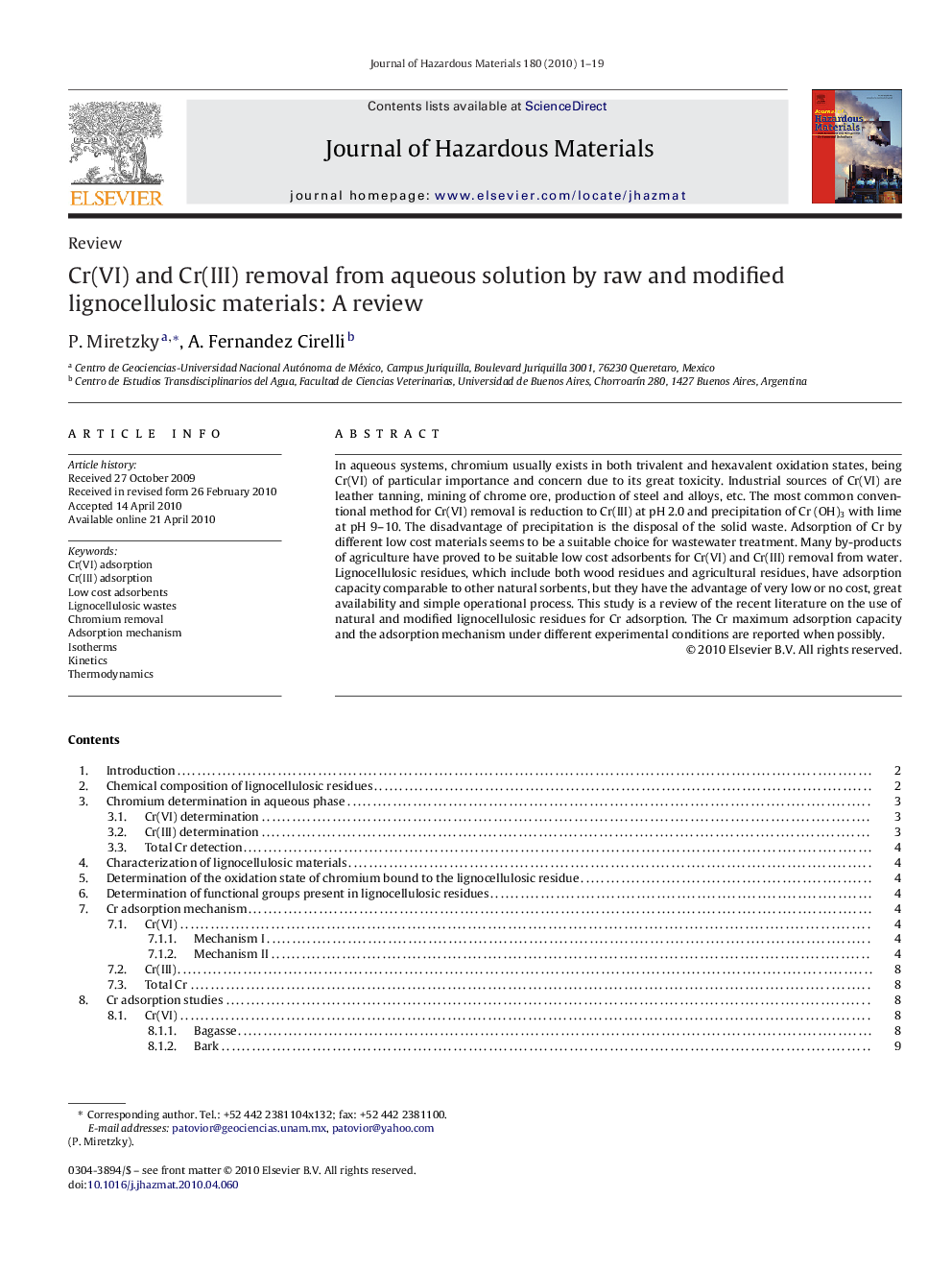| Article ID | Journal | Published Year | Pages | File Type |
|---|---|---|---|---|
| 580027 | Journal of Hazardous Materials | 2010 | 19 Pages |
Abstract
In aqueous systems, chromium usually exists in both trivalent and hexavalent oxidation states, being Cr(VI) of particular importance and concern due to its great toxicity. Industrial sources of Cr(VI) are leather tanning, mining of chrome ore, production of steel and alloys, etc. The most common conventional method for Cr(VI) removal is reduction to Cr(III) at pH 2.0 and precipitation of Cr (OH)3 with lime at pH 9-10. The disadvantage of precipitation is the disposal of the solid waste. Adsorption of Cr by different low cost materials seems to be a suitable choice for wastewater treatment. Many by-products of agriculture have proved to be suitable low cost adsorbents for Cr(VI) and Cr(III) removal from water. Lignocellulosic residues, which include both wood residues and agricultural residues, have adsorption capacity comparable to other natural sorbents, but they have the advantage of very low or no cost, great availability and simple operational process. This study is a review of the recent literature on the use of natural and modified lignocellulosic residues for Cr adsorption. The Cr maximum adsorption capacity and the adsorption mechanism under different experimental conditions are reported when possibly.
Keywords
Related Topics
Physical Sciences and Engineering
Chemical Engineering
Chemical Health and Safety
Authors
P. Miretzky, A. Fernandez Cirelli,
